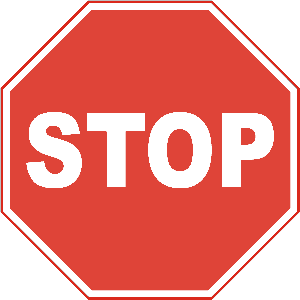2025 District Of Columbia Permit Test 22
The following questions are from real DMV written tests. These are some of the actual permit questions you will face in District Of Columbia. Each permit practice test question has three answer choices. Select one answer for each question and select "grade this section." You can find this button at the bottom of the drivers license quiz. For a complete list of questions and answers for District Of Columbia please visit https://cheat-sheets.dmv-written-test.com/en/district-of-columbia/car.
Number of Tests
Number of Question
Passing Score
17. You come to an intersection that is blocked by other traffic. You should:
Explanation
You cannot enter an intersection if traffic is backed up on the other side and you cannot get completely through the intersection. Wait until traffic ahead clears so you do not block the intersection.
18. When merging onto a freeway, it is usually best to:
Explanation
When entering a freeway, use the on-ramp to accelerate to the speed of freeway traffic so you can blend in smoothly and safely. Entering traffic must yield to traffic already on the freeway.
19. When a stop is required at an intersection and no markings appear to indicate a stop line or crosswalk, a driver:
Explanation
If there is no stop line or crosswalk, you should stop at the point nearest to the intersecting roadway where you can get a view of approaching traffic. You should not enter the intersecting roadway to gain a better view.
20. At intersections, crosswalks, and railroad crossings, you should always:
Explanation
Any time you come to a place where people may cross or enter your path, or where one line of traffic meets another, you should look to the left and right sides of your vehicle to make sure no one is coming.
21. When you see or hear an emergency vehicle coming, you should:
Explanation
When driving on a two-lane roadway or undivided highway, you must yield to an emergency vehicle using its lights and/or siren, regardless of the direction from which it is approaching. Immediately drive as near as possible to the right side of the road and stop, taking care not to stop within an intersection.
22. What does this road sign mean?

Explanation
A stop sign means that you must come to a full stop and yield the right-of-way to vehicles and pedestrians in or heading toward the intersection. Go again when it is safe.
23. An approaching driver fails to dim their high beam headlights. Where should you look?
Explanation
If an approaching driver fails to dim their high beams, glance toward the right side of the road. This will keep you from being blinded by the other vehicle’s headlights and will allow you to see enough of the road to stay on course until the other vehicle has passed.
24. If a child is about to run into the street, you should:
Explanation
If there is danger, you may need to sound a sharp blast on your horn. Do this when a child or any other pedestrian is about to enter into the street in front of your moving vehicle.
25. If you find yourself in a skid:
Explanation
If your vehicle begins to skid, do not use the brakes. Braking could make the skid worse.
See the exact questions that will be on the 2025 District Of Columbia DMV exam.
99.2% of people who use the cheat sheet pass the FIRST TIME
Karla only needed to Study for 1 hour. She then went to the DMV and Passed her test
DMV Test Cheat Sheet: John Tells us How to Ace The Driver’s Test On your First Try
